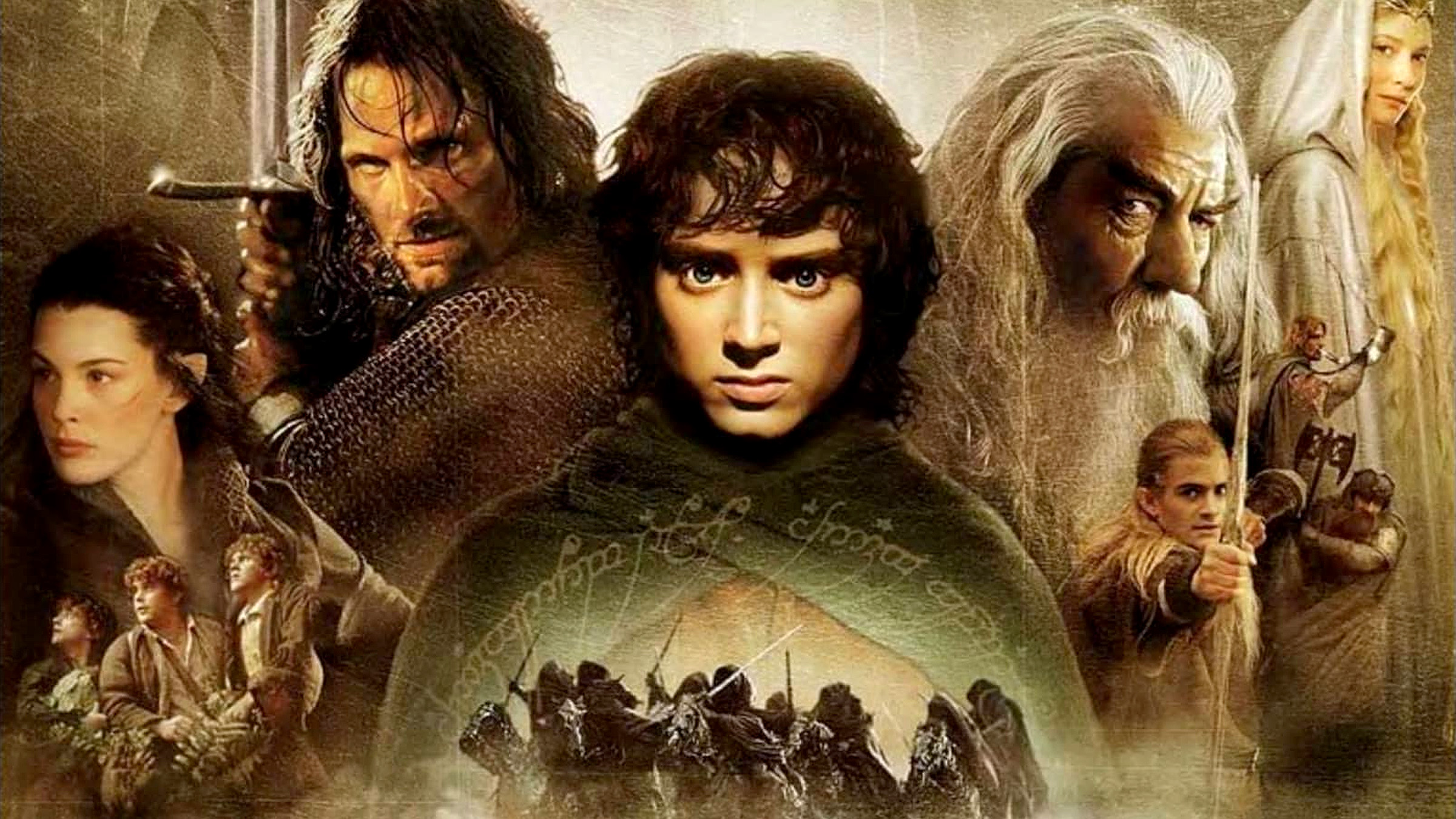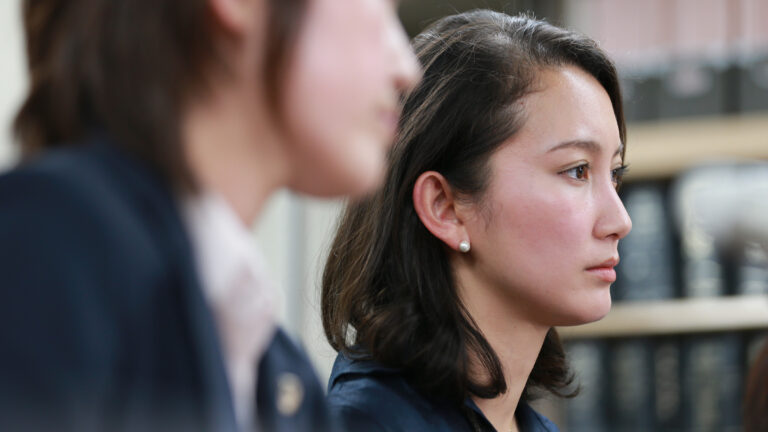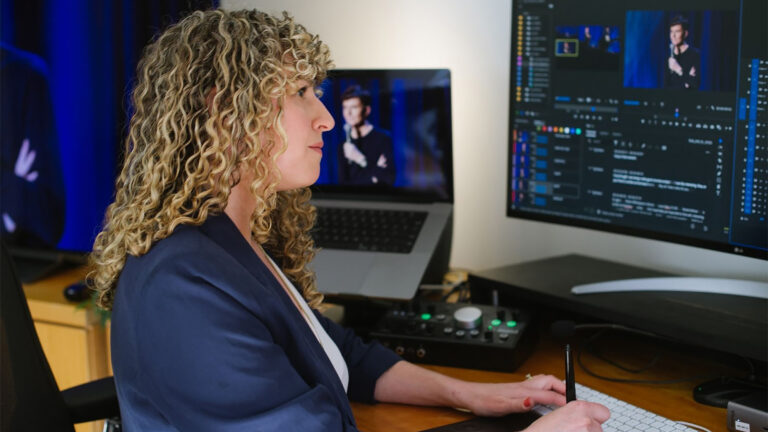Has it already been 20 years since the first of The Lord of the Rings movies was released?
It’s hard to believe that what started as a passion project by a little-known Kiwi director still rewards first—or repeated—viewings, a testament to just how timeless the trilogy still feels.
So as we mark the anniversary of this enduring classic, it’s worth revisiting how a (then) 40-year-old fantasy series favored by nerds and scholars became one of the most creatively and culturally influential milestones in motion picture history.

What was it that made the cinematic trilogy possible in the first place? What made it accessible to newbies and satisfying to cinema purists? How did it manage to achieve both box office and critical success?
The short answer? Because all the things.
From the quality of the world building to the adherence to the story. The high stakes, lofty themes, and emotionally resonant character arcs. The spectacular visuals and seamless effects. The score, the pacing, and the extreme care applied to every story beat and every frame. The meticulous color correction and mastering. Even the way the creators engaged the fans and encouraged their participation.
This fellowship of filmmakers, led by LOTR fan-in-chief Peter Jackson, took us all on a longer journey than anyone could have foretold. Forging new paths and facing nearly impossible odds, they changed not just how we make movies, but also the kinds of movies we make. It’s an epic tale in every sense.
Just how epic?
First, let’s take a look at some of the (staggering) numbers:
- A production budget of nearly $300 million, plus another $200 million spent on publicity.
- Principal photography totaling 438 days from 1999 to 2001, with pickup shots for six weeks each year from 2001-2003, and miniature shoots spanning more than 1000 days.
- As many as 2,400 crew members working at the height of production with more than 150 locations.
- Some 5,997,000 feet of film, representing 1,110 hours.
- A final running time of 11 hours and 26 minutes for the extended edition.
- Seventeen Oscars.
- Oh, and nearly $3 billion at the box office.
For context, Steven Spielberg made two $100 million movies in the late 1990s: A.I. and Minority Report. But that was Spielberg, a well-known director with a reliable box office record.
Giving a director whose most expensive prior effort (1996’s The Frighteners, which cost $26 million to make and grossed $29 million in worldwide box office) several hundred million dollars for three films at once was basically unheard of.
Of course, sequels and series were commonplace by then, but a studio committing to three pictures before even having an idea of how the first might perform was an epic risk.
Beyond that, the big-ticket Spielberg movies relied on George Lucas’s Industrial Light & Magic to handle their difficult visual effects. Jackson, on the other hand, planned to use his VFX startup, Weta, in New Zealand, an epically ambitious task.
Groundbreaking technology
Every journey begins with a single step, and Peter Jackson’s was no different.
Except that it’s a lot easier to envision your destination when you have a map that shows you the best route.

But in the case of LOTR, not only did the filmmakers embark without a map—in some cases, the roads hadn’t even been built.
When you look back at the existing techniques the intrepid team at Weta pushed to new limits, or at those they invented outright, you have to appreciate how absolutely ingenious some of it was. While Industrial Light & Magic dominated at the Oscars in the 1990s, Weta went on to establish itself as a worthy rival in the 2000s, making New Zealand a sought-after production and visual effects destination.
The early use of VR cameras! Dynamic forced-perspective shots using motion control! Believable computer-generated characters! AI-generated crowds! And lots of truly scary monsters!
It’s earned them stacks of awards, including Oscars for Best Visual Effects for each of the three movies (plus three more for King Kong, Avatar, and The Jungle Book) along with a whopping 12 Academy Science and Technology awards.
Most of it has also become part of the standard toolsets for filmmakers today, and even made its way into real-world, non-creative applications.
MASSIVE
Back in the late 1990s and early 2000s, the visual effects industry watched in awe as Stephen Regelous developed the very cleverly named MASSIVE (Multiple Agent Simulation System in Virtual Environment).
The AI-based simulation package allowed Jackson’s team to create and manipulate digital characters to populate battle scenes, as well as digital doubles for principal characters in action sequences.
What makes MASSIVE so unique is that the “agents,” as the characters are called, have complete bodies and movement that’s driven by motion-capture libraries. This results in crowds and characters that behave far more organically than was previously possible. The fuzzy logic engine also enables the agents to react to conditions around them, which adds another layer of authenticity to defeat the kind of robotic motion seen in earlier simulations.

Widely embraced by VFX creators, MASSIVE went on to give artists the ability to achieve vastly larger and more realistic scenes, from Game of Thrones in The Battle of the Bastards episode to the hordes of zombies in World War Z to most of the MCU films of recent times.
The result?
For filmmakers, solving the logistical challenges of shooting live action with anywhere from dozens to thousands of extras while gaining the flexibility to design, choreograph, and iterate on realistic-looking synthetic characters allows them to build once-unimaginable worlds.
For audiences, the expectation that movies will transport them to new and thrilling places brings them to theaters. For studios, the investment in high-budget, large-scale epics lets them reap box office rewards and streaming service subscriptions.
But in light of the recent sale of Weta Digital to Unity for $1.6 billion it’s clear that yet again the work of VFX developers is being used for more than entertainment—in this case for the creation of the metaverse, the next frontier in virtual and augmented reality.
Just as video game technology has been repurposed for real-world applications, adapted for use in, for example, pilot and military training, Weta’s MASSIVE is now used extensively in architectural visualization and engineering simulations for its abilities to model “the idiosyncrasies of complex, real-life behaviors.”
How idiosyncratic?
In the early 2000s it was reported that some of the MASSIVE soldiers had enough intelligence to run away from the enormous mammoths in The Two Towers. It turned out to be a bug in the software, but the idea that it was even a plausible explanation speaks to the sophistication of the program.
SSS and Tissue
If you’re of a certain age, you might remember the controversial Jar-Jar Binks, often referred to as the first fully CGI character.
More accurately, he was the first fully CGI character to appear throughout a feature (the stained glass knight of Young Sherlock Holmes was, in fact, the actual first).
Originally intended to be played as an actor in a suit, a series of challenges led the VFX team at Industrial Light & Magic to pivot to a CG Jar Jar.
Widely reviled by Star Wars fans for the way the character was written and acted, the fact remains that in the late 1990s the technology still wasn’t quite where it needed to be for him to feel fully realistic.
And then a little creature called Gollum was born, and forever changed the way computer-generated characters looked, moved, and interacted with their live-action counterparts and environments.
Because the human eye and brain perceive such a wide range of color and luminance values, it’s easy for us to detect when something seems unnatural. Uncanny Valley is the term used for that disconnect, and all credit goes to Weta for pioneering the technology that made Gollum (and the Na’vi of Avatar) Oscar-winning successes.
The first development, by Christophe Hery and Per Christensen (for which they won a Technical Achievement Award in 2003), utilized Sub Surface Scattering (SSS) techniques to render skin and translucent materials. By creating a way to take the light that enters through the skin and emulating how it diffuses beneath the surface, they were able to give Gollum his lively eyes and luminous body.
Their later invention, Tissue, went beneath the skin’s surface, building complex anatomical models from the skeleton to the musculature to the fat, according to co-creator Simon Clutterbuck. Clutterbuck, along with James Jacobs and Dr. Richard Dorlingk won a Technical Achievement award for their pioneering work.
In this case, medical technology, specifically that of magnetic resonance imaging (MRI) and x-rays, helped generate biomechanical data to produce the most realistic models possible.
The combination of the SSS techniques and Tissue took Gollum to new levels of believability, as the movements of skeletal and muscular systems automatically affected skin deformations.
And, once again, this application became ubiquitous in Hollywood blockbuster workflows including Avatar, Rise of the Planet of the Apes, Avengers, and even on Furious 7 in order to digitally recreate Paul Walker’s character after the actor’s death.
Performance capture
Weta’s techniques for creating synthetic characters capable of realistic movement were only part of the equation. But where did the movement itself come from?
Motion capture came into existence in the early 1900s with the invention of rotoscoping, tracing filmed footage of a live performance frame-by-frame to achieve an animated version of the subject’s movement. The first full-length feature to employ it was Snow White and the Seven Dwarfs in 1939.
What’s significant about rotoscoping is that animation creators from Max Fleischer to Walt Disney realized that being able to mimic naturalistic movement was desirable.
If you look back to when computer animation went mainstream in the 1980s, you’ll see that the motion was limited and not at all fluid.
But as the technology advanced and artists became skilled at modeling, rigging, and animating computer-generated characters, CG became the more dominant way to create animated content. Disney demonstrated this point when they acquired Pixar in 2006, and then basically phased out hand-drawn animated films.
Computer-assisted motion capture took hold in earnest in the 1990s (Sinbad: Beyond the Veil of Mists, Star Wars: Episode 1 – The Phantom Menace), but the technology still required animators to make painstaking frame-by-frame adjustments to smooth the characters’ movement.
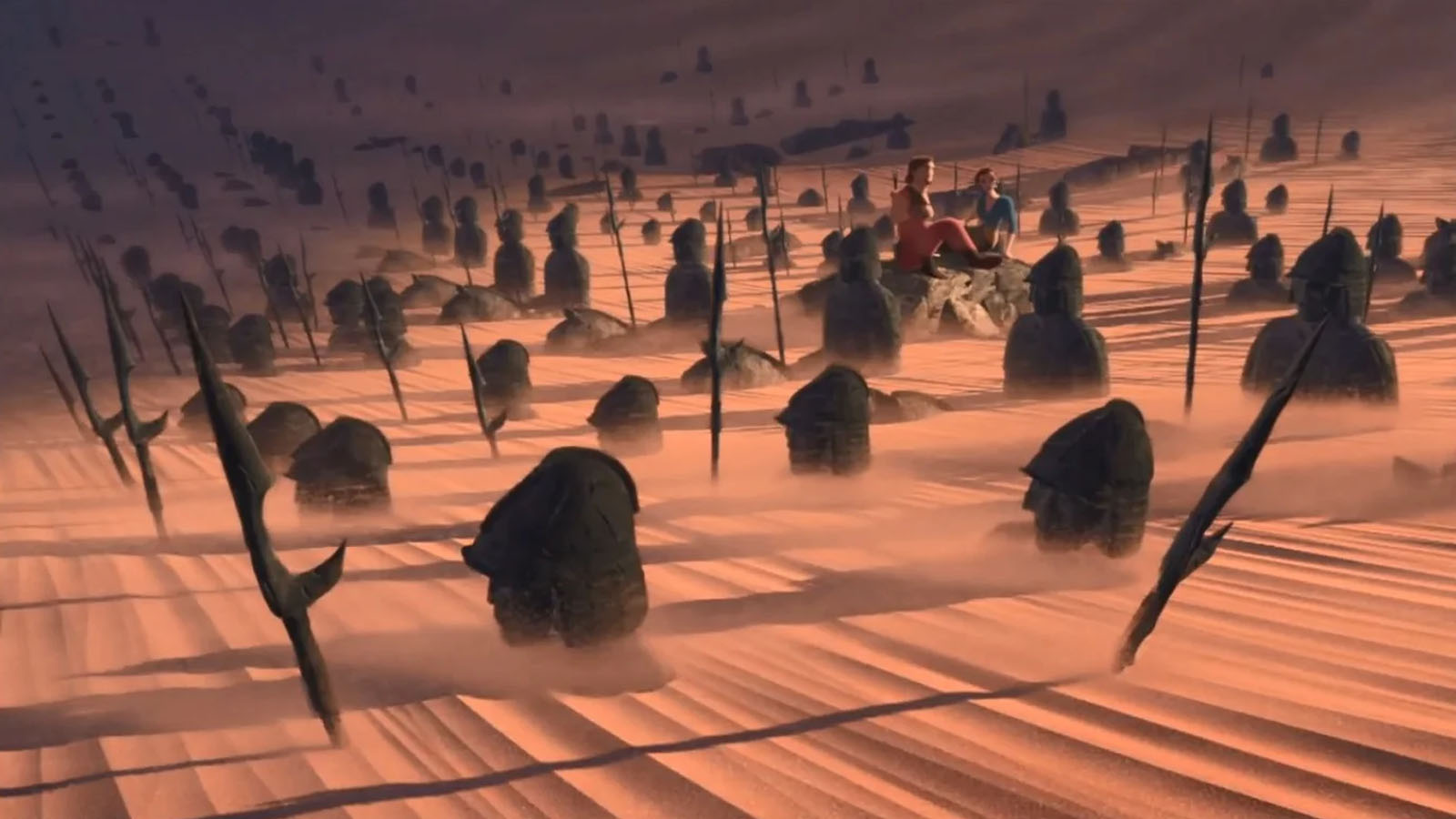
Once again, Weta elevated the technique for use in LOTR.
In 2002, Andy Serkis became, if not a household name, certainly a name known in the industry for his performance as Gollum. He performed Gollum on set with the other actors, often just in a skin-tight plain-colored suit. Additional body-only motion capture of Serkis in an optical marker suit was done separately on a motion-capture volume installed at Weta Digital (which has been running ever since).
The final result was a blend of this motion capture of the actor and keyframing by artists, always closely observing Serkis’ original performance.
By the time they produced King Kong (2005), they had “shrunk down” the system to work with facial markers in order to capture the subtleties of expression. Further refinements for Avatar (2009) included enabling groups of actors to perform together, and the development of head-mounted cameras that allowed simultaneous body and facial tracking.
The next step came with the Planet of the Apes trilogy, in which they were able to take performance capture out on location with innovations such as wireless cameras, smaller head cameras, and suits outfitted with infrared sensors. This allowed them to shoot outdoors—even in bright light, rain, or snow.
So believable was Toby Kebbell’s performance of Koba and Andy Serkis’s performance of Caesar, that there was public outcry surrounding Serkis’s Oscars “snubs.”
Most recently, we’ve seen the technology used for de-aging Will Smith in Gemini Man, while Industrial Light & Magic developed their own capture technology for Martin Scorsese’s The Irishman.
It’s all well and good that performance capture has enabled filmmakers to successfully bring non-human characters to life, but what about creating more believable synthetic humans?
We’ve all seen recent deepfake examples, such as Jordan Peele’s Barack Obama or the “Tom Cruise” videos, but obviously anything that’s as easy to achieve as that can (and, let’s face it, will) be used for applications other than entertainment. Digital humans as a service, anyone?
Meanwhile, we can look forward to increasingly realistic humans, creatures, monsters, superheroes, aliens, and more as performance-capture technology continues to evolve into AR and VR entertainment, and beyond.
Moving motion-control shots
The use of motion-controlled cameras and forced perspective were hardly new when The Fellowship of the Ring was in production.
But, again, Weta discovered new and inventive ways to modify and modernize the techniques, vital to making the many sequences involving characters of different sizes more dynamic.
Forced perspective traditionally depended on subjects being at different distances from a locked-down camera in order to create the optical illusion of differences in size and scale. Weta, however, devised a system in which they could move the camera during a forced-perspective shot without destroying the illusion.
By synchronizing the camera’s dolly movement to a track where the actors sat, the team at Weta had yet again taken a time-honored technique and reinvented it for contemporary audiences.
The great Roger Deakins also used the technique on Skyfall and Blade Runner 2049.
Miniatures and “big-atures”
A longtime creator and fan of miniatures, Peter Jackson relied heavily upon their use in the trilogy—even though Weta was capable of creating highly realistic computer-generated environments.
Why? According to an ASC interview with Alex Funke, visual effects DP, there’s a level of detail with actual physical objects that adds a greater degree of texture and depth to the shots. The carefully crafted props and environments also enhance the sense of awe the viewers feel.
“At some subconscious level, viewers can tell when they’re seeing real photography. So in the interest of telling a believable story, the more actual camera elements you have, the better. That’s the basis of Peter’s brief: to use the maximum number of photographic elements.”
In keeping with Jackson’s obsessive attention to detail, many of the miniatures were actually quite large; the height of the Minas Tirith model measured almost 23 feet, nearly scraping the ceiling of the Weta building in which they constructed it.
Weta called these enormous constructions big-atures, whose impressive screen presence caused even the model makers themselves to gasp in awe when they viewed the final composited shots on the big screen.

In all, the miniatures unit shot for over 1,000 days using seven different cameras to create works of art that represented the apex of the craft. How would that influence the future of miniature construction and photography? Certainly by raising the bar on what’s possible with enough skill and time, and rewarding LOTR enthusiasts with a trove of visual treasures.
We need to do the work, then erase our tracks and disappear.
Noting the scale and scope of the models in The Return of the King, Funke said, “This film has as many effects shots as the first and second pictures combined. I believe that this trilogy has given a shot in the arm to miniature photography. If the audience is thinking about the process, then we’ve lost them, and we’ve failed to do our jobs. We need to do the work, then erase our tracks and disappear.”
An arduous path
There was almost nothing typical about Jackson’s approach to the overall production of the trilogy.
For starters, the idea of making three incredibly ambitious films concurrently proved challenging in more ways than even he might have initially imagined.
Shooting in so many remote locations in New Zealand meant literally having to build roads to access them. The films’ budgets, originally $60 million each, escalated as production continued, causing friction between New Line and Jackson that resulted in lawsuits, and was only quelled when a 26-minute presentation at Cannes created an immediate buzz about the films.
Just one of the spectacular, but remote, New Zealand locations used in The Lord of the Rings.
But even more than that were the actual logistics of making films in which no detail was too small to obsess over, and no goal too formidable.
Previsualizing monsters
Knowing that storyboarding would be insufficient for the trilogy, Jackson’s admiration for Star Wars led him to directly ask Lucas and executive producer Rick McCallum about the digital pre-vis techniques they used on their films.
By adding a little of the Weta special sauce, the team devised a way to pre-vis the Cave Troll sequence in Moria.
First, they built a crude CG set, and one of the VFX team put on a mo-cap suit to act out the troll’s performance using sound counts to block out the action. This enabled them to place the troll, at the proper scale, into Balin’s tomb.
Next, they rescaled the mo-cap environment so that the same performer could represent a properly sized human. They did that for all the human-sized characters, placed them into the tomb environment, and then rescaled for the hobbit-sized characters who jumped onto the troll’s back in the sequence.
After that, they fashioned a stick with a lump of wood, to which they attached mo-cap sensors. Jackson put on a set of goggles that displayed the computer environment, picked up the stick, and was able to manipulate what was essentially a virtual camera to simulate how the camera would move through the environment.
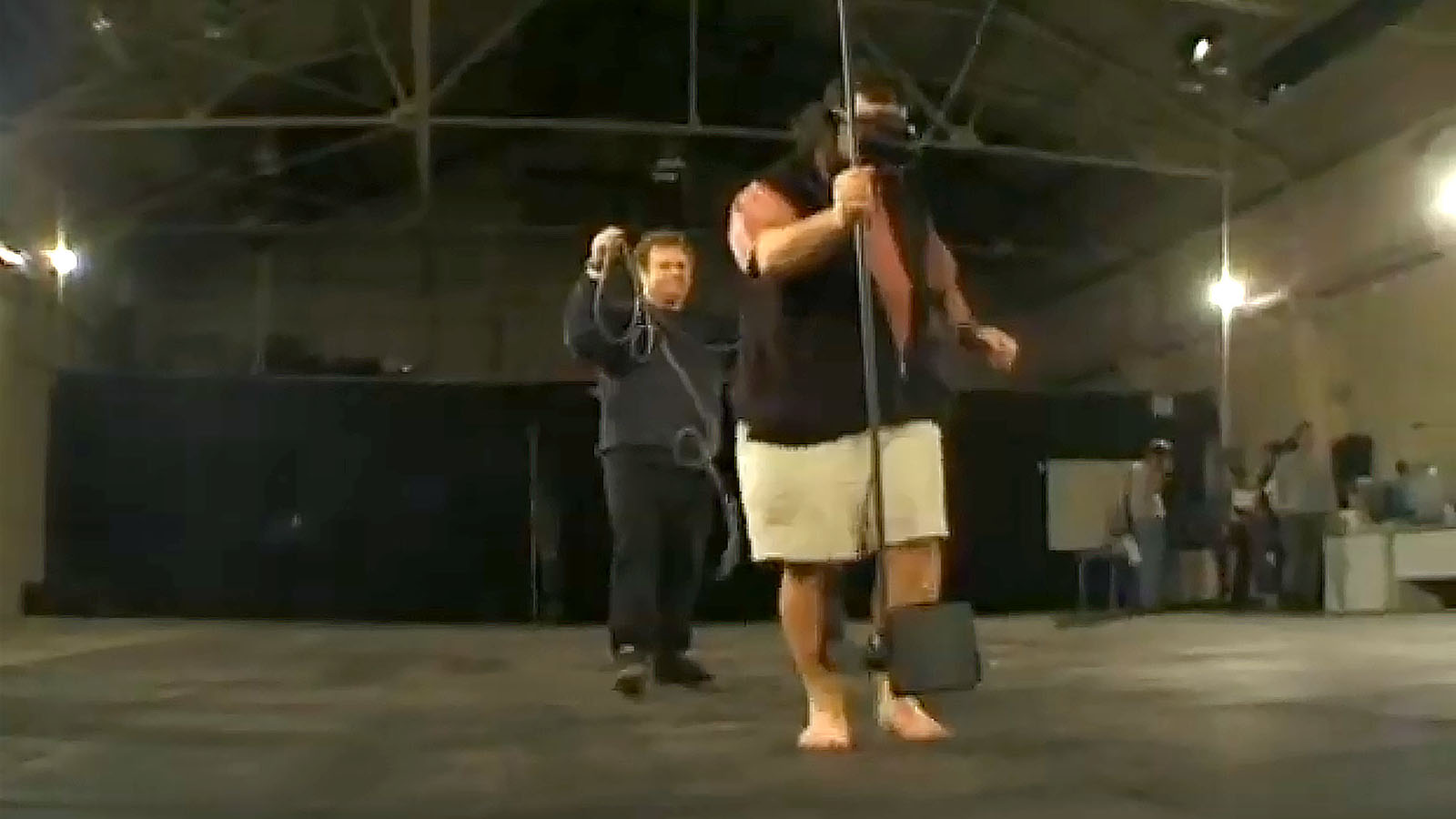
It’s just another example of the intensive research and development that allowed them to move forward with Jackson’s vision, and resulted in new previsualization techniques that would be used on many more effects-intensive movies.
Post-production times three
Not that any of the films were easy to edit, but The Fellowship of the Ring, with basically a single storyline, was the simplest. Even so, Oscar-winner John Gilbert spent two years working on it, nearly right up until its release.
Moving into The Two Towers, the fellowship is split apart, creating three distinct storylines, which Jackson described as “a bloody nightmare.”
But with The Return of the King, there were essentially five storylines to keep in play, along with complex and climactic battle scenes, and the need to wrap the trilogy up in emotionally satisfying ways.
Add to that the two million feet of celluloid shot specifically for the third film, with the “embarrassment of riches” (leftover scenes that were cut from the previous films but could potentially be inserted into the third) and the post-production process became as arduous as any of the other parts of the process.
Also bear in mind that there was only one director whose eyes, body, and brain needed to be in several places at once.
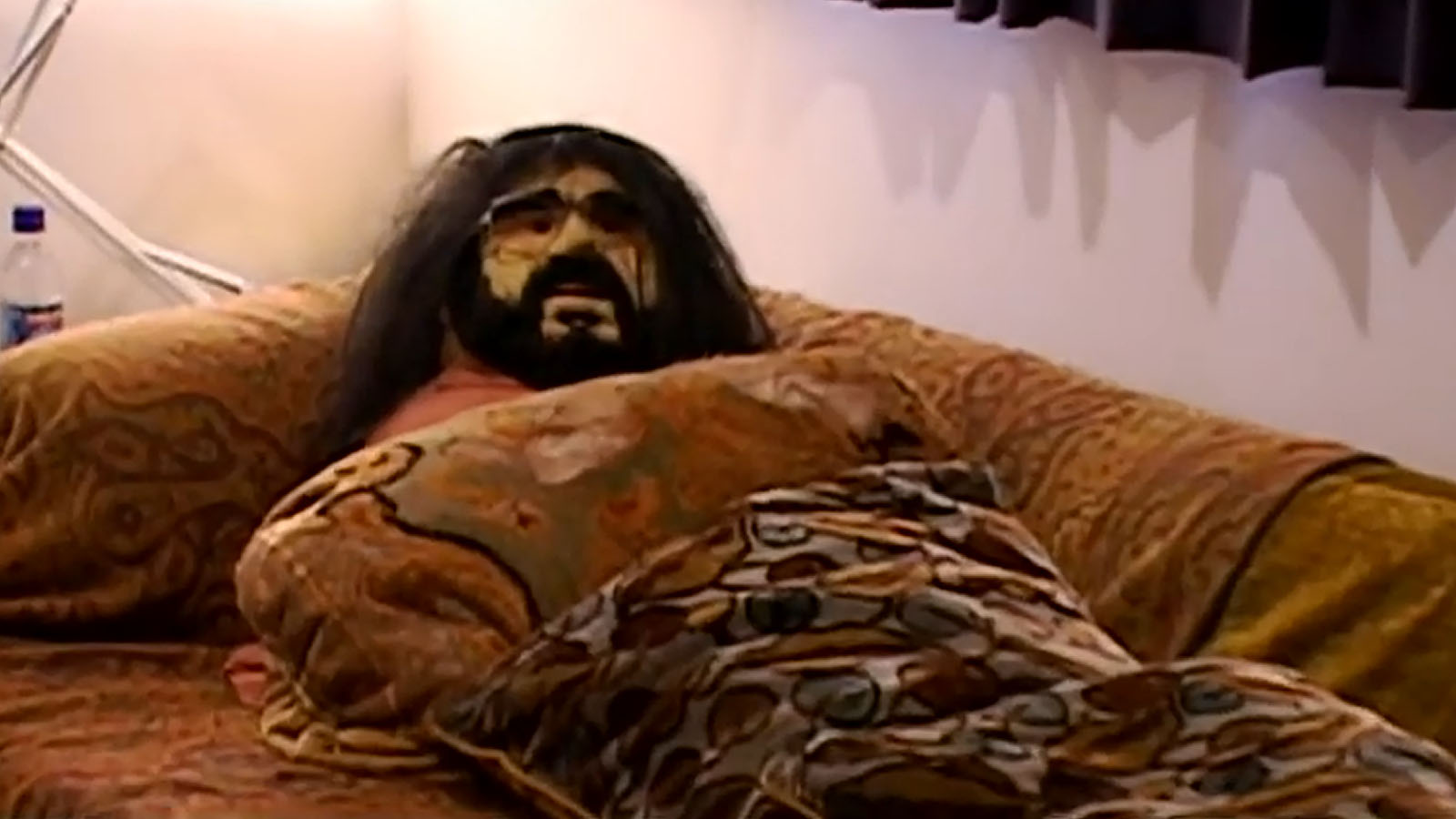
TL;DR – there were no shortcuts. And Peter Jackson vowed that he would never assume such a monumental task again—until, that is, he took on The Hobbit trilogy in the 2010s.
Four editors handled the tasks for the LOTR: longtime Jackson collaborator Jamie Selkirk functioned as supervising editor, with John Gilbert taking on The Fellowship, and Michael Horton cutting The Two Towers. Annie Collins, Horton’s former assistant, essentially functioned as Selkirk’s “hands” on The Return of the King because Selkirk didn’t use Avid.
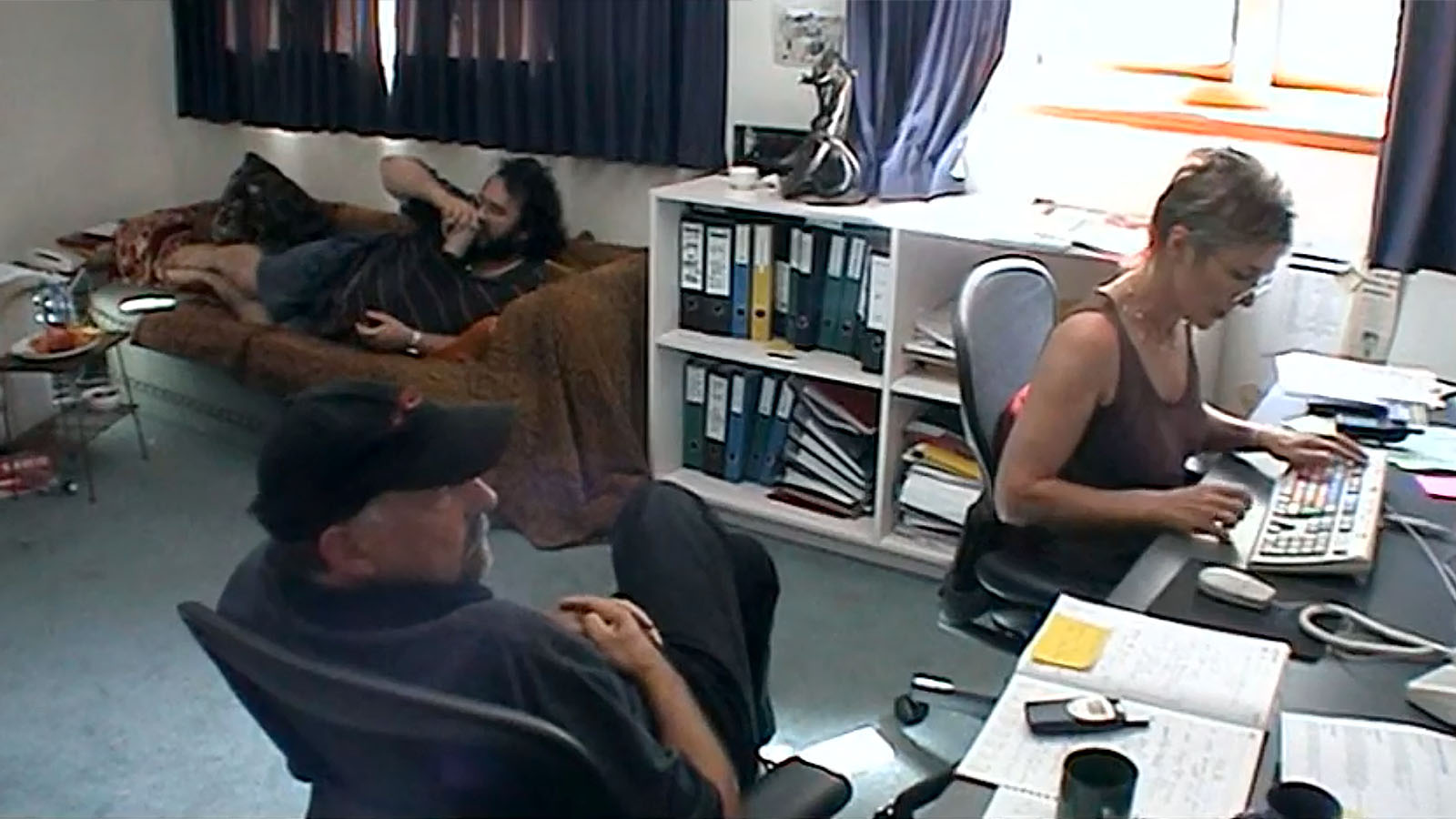
If Jackson’s desires exceeded his bandwidth, his discoveries did provide insights for those taking on subsequent projects of a similar nature and scope.
Take, for example, Game of Thrones.
With each season consisting of approximately ten hours of theatrical-quality episodes, a “divide and conquer” approach was necessary to get through the sheer volume of the footage. Which was nonetheless an enormous task, according to first-season editor Oral Ottey.
Compared with Game of Throne‘s at least six directors and several editors, the point is that Jackson’s achievement as director of the LOTR earned him the accolades and awards. And it’s fair to say that he both raised the bar when it comes to taking on seemingly impossible projects and influencing the next generation of creators.
Sound design and score
When creating visuals that have never before been seen, it’s incumbent on the sound designers to enhance them with equally unique sounds.
They’re a notoriously clever bunch—using the sound of celery for breaking bones, or emptying a can of dog food into a bowl to get the sound of a liquid metal Terminator.
But how many of them have thought to use a stud horse having his semen extracted to create the sound of a Mûmakil dying during The Return of the King?
Other repurposed animal sounds include a pitched-down walrus during the Watcher sequence as the fellowship enters Moria. For the sounds of the Orcs, the team made a trip to the possum research center outside of Wellington to record their screeches, which they further augmented with the sound of a pigdog. But that was only for one type of Orc.
So meticulous was their approach that they assigned different kinds of sounds to different kinds of Orcs, using insect and grasshopper sounds for the “crab-like” Orcs.
Much has been said about Howard Shore’s impressive score (which earned him three Oscars) and is held up as an example of a score that feels “discovered, rather than written,” according to musicologist Doug Adams.
Shore’s approach was to make the score feel as though it “commented on the story,” while also feeling as though it could have naturally occurred in Middle Earth.
Shore took extra pains to keep the score as authentic to its world as possible. He sought out ancient and non-Western instruments, including the monochord, invented in Greece in 500 B.C., which became the signature sound of the woods of Lothlórien and Galadriel.
When you listen to the scores of even revered composers like John Williams and Danny Elfman, you can always hear their signature sounds and identify their compositions.
But as with everything else that made LOTR so unique, Shore’s intricate score, the composition of which spanned four years, disappears into the viewing experience, enhancing it but never calling attention to itself. Rather, it becomes yet another element in the construction of a complete masterpiece.
Color grading and subsequent remastering
Creating a progressive color palette for the three films took the combined efforts of cinematographer Andrew Lesnie and supervising colorist Peter Doyle, who refers to his role as that of a “digital gaffer.”
The Fellowship was actually color-timed using the traditional analog process of “printing lights,” in which the amount of blue, red, and green light is manipulated to create a film print from a film negative.
The already gargantuan task of color timing a film with more than 3,000 shots was further complicated by the need to marry the live action to the nearly 500 visual effects miniature shots along with the numerous CG characters and environments.
Lesnie originally shot on 35mm Kodak film, which was scanned at 2K, and recorded back to Fuji film for theatrical projection, a choice they made because they felt the Fuji print stock was “more forgiving in the lower gray tones.”
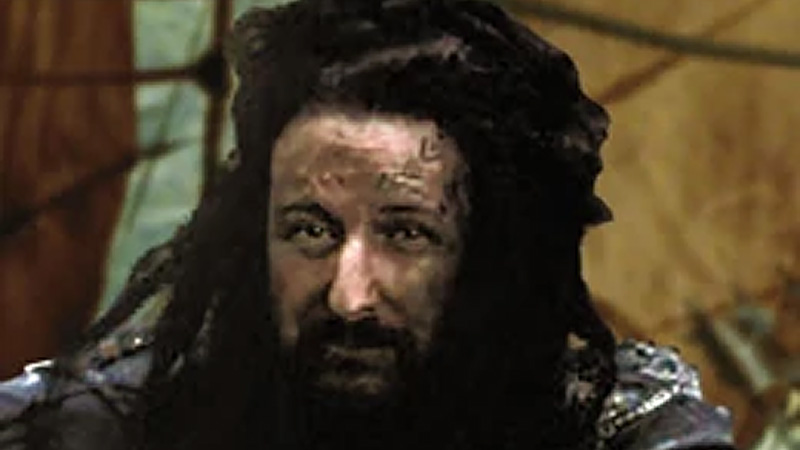
Subsequently, Doyle took on a digital intermediate workflow using what was then the new 5D Colossus software in Colorfront to grade The Two Towers. Colossus gave them greater control over designing the looks of the scenes by digitally matching colors in sequences with shots that were filmed at different times of the day using multiple cameras in various weather conditions.
Doyle and Lesnie worked to achieve a grittier and darker look, a “hardened reality” with a heightened sense of “the creeping menace,” which they achieved by applying sharpening tools. This enhanced the details of armor and battle gear throughout the series.
Additionally, they strategically used power windows around the characters’ eyes and sharpened them to help focus the viewer on the characters’ performances.
But all of that was in the early 2000s, and digital grading technology has rapidly advanced. Jackson has always been one to push the limits of technology. Think, for example, about the restoration process used on the World War I footage to create They Shall Not Grow Old.
So naturally he embraced the idea of a 4K remastering of the much-loved trilogy, imbuing it with new life—to the delight of LOTR fans and cinephiles.
Revisiting the films, Jackson noted the degree of visual inconsistency between the three—largely because the films were shot over such a lengthy period and in so many different conditions.
They also used different mastering workflows and the digital tools were limited compared to today’s standards. “We didn’t have all this stuff to play with back in the old days,” Jackson said. By which he meant 20 years earlier for LOTR and 10 years for The Hobbit trilogy, which was remastered, as well.
You may recall that Jackson used 48fps capture for The Hobbit, and the audience reaction was…not great. That was in 2012, and in 2013 Jackson took the negative feedback and tried to “soften” the effect in the second film, The Desolation of Smaug.
We didn’t have all this stuff to play with back in the old days.
In 2020, Jackson’s 4K HDR remastering allowed him to achieve a consistent look and sound across all six films. Jackson also seized the opportunity to update some of the “imperfections” on the VFX shots that became apparent as a result of up-resing to 4K.
A director’s or studio’s decision to remaster a classic film can be the result of a variety of goals. Some directors feel that their original vision didn’t come through in the final product, while others reflect on their then-vision versus the way their vision may have changed over time.
But Jackson’s choosing to remaster the films was motivated by wanting to make them look more consistent as an overall body of work, and to let viewers enjoy a richer and more contemporary-looking version of them.
And for fans who can’t get enough of the films, the various boxed sets (some with as much as 60 hours of extras) are as legendary as the story on which they’re based.
Engaging with fans
Many LOTR fans would say that the films themselves are a gift.
Jackson, however, almost single-handedly changed the interaction between filmmaker and fan—even before social media had become an easy way for creatives to interact with their supporters.
Jackson, whose passion for the books ignited his decision to take on the film versions, embraced the early internet movie fan sites. He solicited feedback, involved them in casting ideas, and even attended the Oscar-night parties thrown by the fans for both The Fellowship of the Ring and The Return of the King.
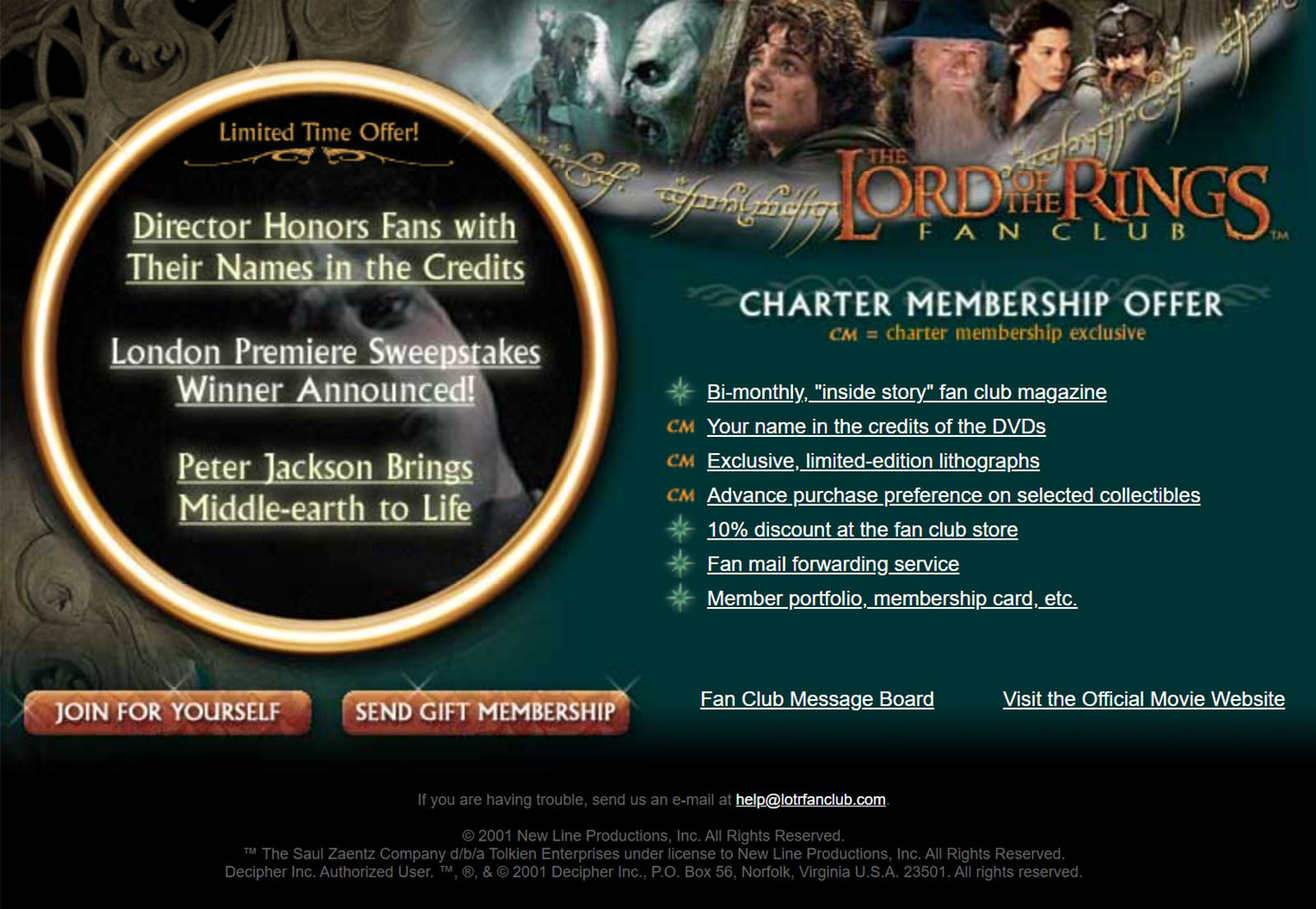
They even launched a fan club whose members would have their names included in the credits on the DVD.
Elijah Wood himself registered as fan number one.
“I think what they’re doing with the fan club is really wonderful. Since I started working on these films, I’ve been amazed by how many people have been impacted by this story and how much they care about it at a deep, emotional level. The fan club creates one big, worldwide society of Lord of the Rings fans and I am proud to be part of that. Besides, I want to be sure Peter puts my name in the credits of the film’s DVD,” Wood said.
Today, fans can follow their favorite directors or stars on social media platforms. But it was Jackson who first recognized the importance of building a loyal online following—which studios discovered could boost their bottom line.
Reinvigorating a genre
In the way that the Star Wars series opened the floodgates for sci-fi adventures, LOTR was the catalyst for mainstream epic fantasy.
The success of The Fellowship of the Ring proved its widespread appeal, revealing a worldwide audience willing to engage in—and pay to see—expensive tentpole productions.
The first of the Harry Potter films, released the same year, further demonstrated that movies based on multi-volume literary series were like box-office gifts that kept on giving. Studios, who had previously waited to engage in sequels until a property was proven, were now willing to acquire whole franchises.
In the years that followed, we saw modern series like The Hunger Games and Twilight, but also old stories resurrected from the Brothers Grimm (the two Snow White and the Huntsman films) and, most recently, Frank Herbert’s Dune.

And, of course, it almost goes without saying that the Marvel Comic Universe and DC franchises are their own special breed of film and financial juggernauts.
A side note: Before Peter Jackson brought his LOTR series to New Line, he’d been in talks with the then Disney-owned Miramax and Harvey Weinstein, who wanted Jackson to condense it down to a single movie. Disney eventually embraced live-action fantasy series with C.S. Lewis’s The Chronicles of Narnia.

The irony is that C.S. Lewis and Tolkien were great friends, who together went to the theater to watch Disney’s animated Snow White and the Seven Dwarfs back in the 1930s, and while both were impressed with the animation techniques, neither cared for the treatment of the dwarves or for Disney’s approach to beloved classic fairy tales. Later on, Tolkien instructed his publishers never to allow Disney to make movies of his work.
Clearly, there’s an unending appetite for adult-oriented fantasy properties for screens of all sizes—and the darker, the better. Game of Thrones (HBO), The Witcher (Netflix), Foundation (Apple TV+) and Wheel of Time (Amazon) all partially owe their success to the deep cinematic world of LOTR.
And Amazon is now continuing to build upon Jackson’s legacy.
Their LOTR “mega-series” has captured attention for its $450 million price tag.
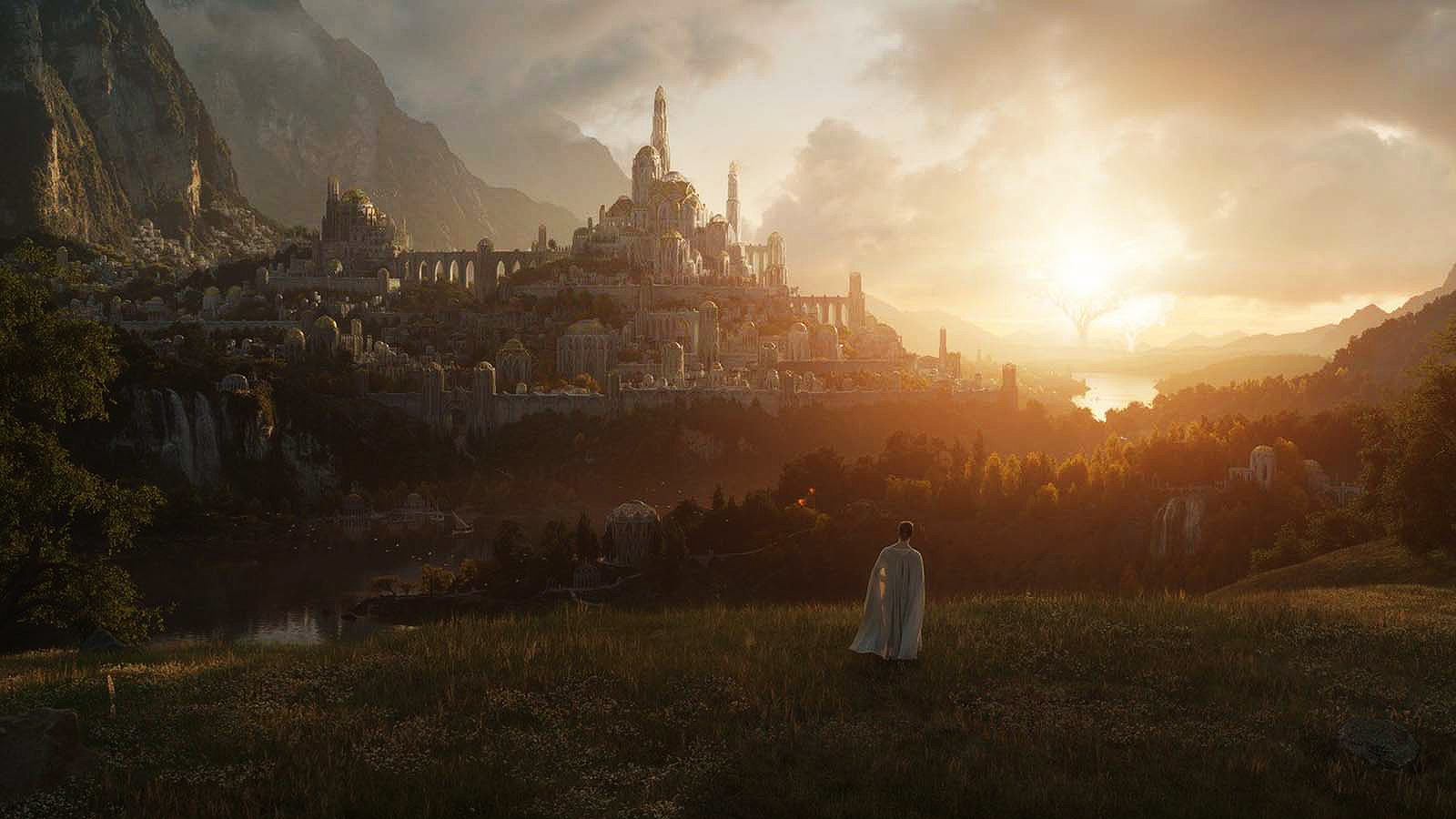
Meanwhile, Netflix has recently announced its slate of 2022 series, which leans heavily toward fantasy and sci-fi.
Influencing a culture
It’s possible that even without the LOTR movies, the brainiacs of Silicon Valley would have been quite familiar with the books.
But the degree to which the lore has become so embedded into the tech world is a little…extra.
Peter Thiel famously named his data analysis start-up “Palantir Technologies,” and Facebook’s vice president of AR/VR has referred to Mark Zuckerberg’s silent stares as “Sauron’s gaze.”
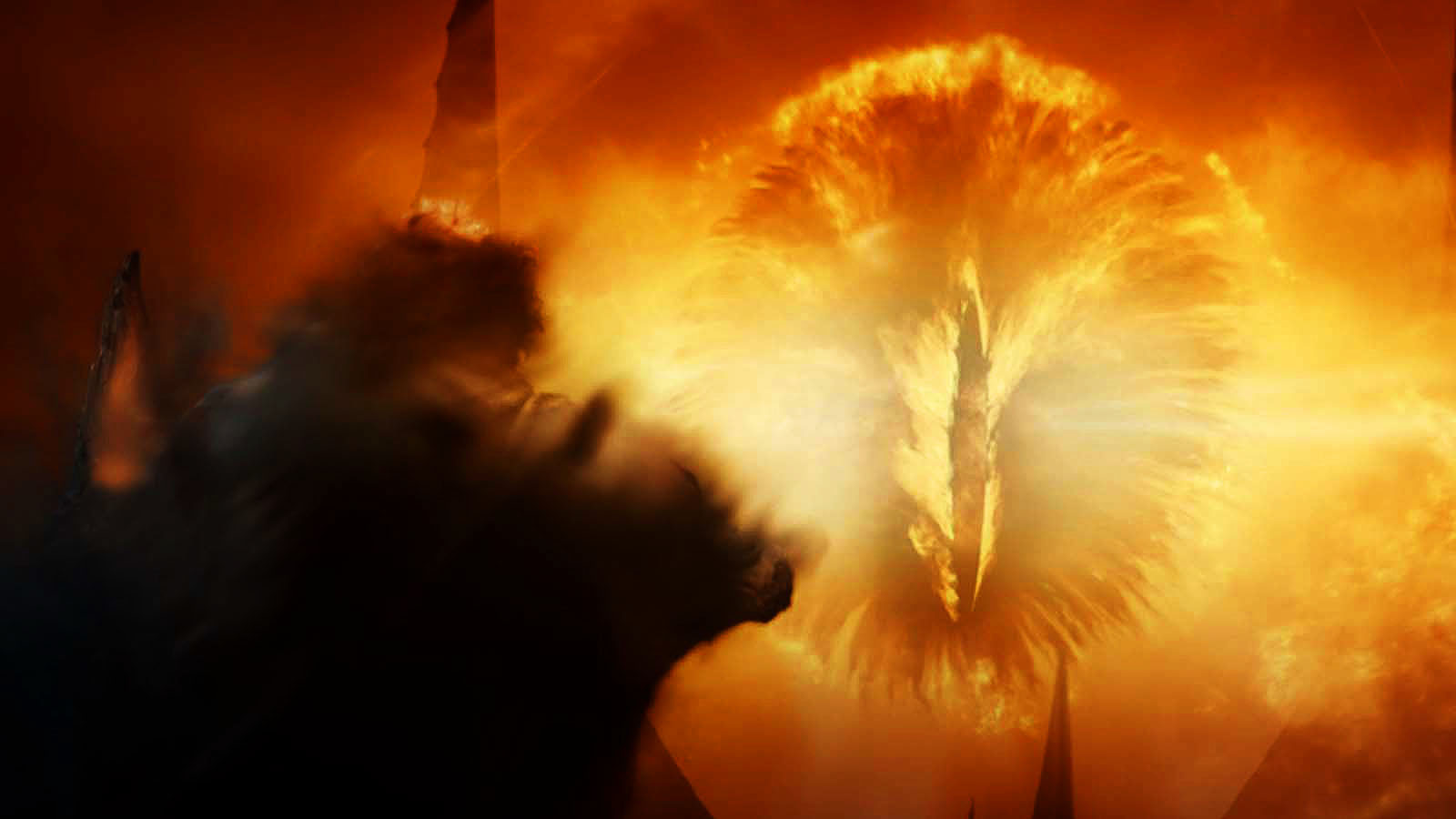
LOTR also serves as a sort of ethical guidepost, emphasizing loyalty, diversity, tenacity, and sacrifice.
When Silicon Valley’s creator Mike Judge gave fictional company Hooli the mission statement “Making the world a better place,” it was a dig at the earnestness with which tech companies actually are trying to make the world a better place, through hard work and determination—all while making gobs of money.
Neither J.R.R. Tolkien nor Peter Jackson were in it for the money. They told, and retold, the story in all earnestness. In the scene toward the end of The Return of the King, plucky Samwise looks at Frodo’s weary face. “I can’t carry [the ring] for you, but I can carry you,” he says.
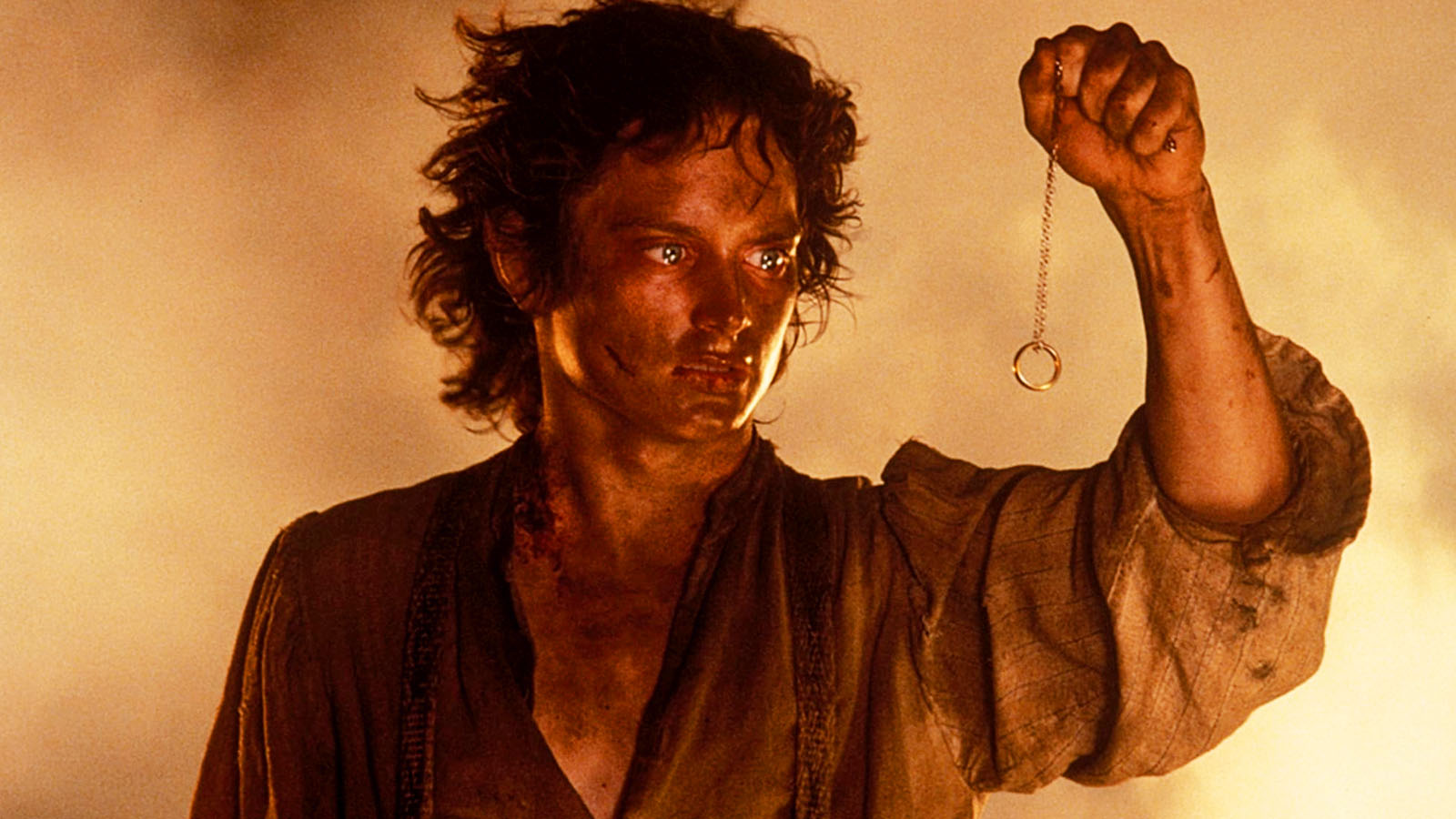
In Jackson’s interpretation, LOTR isn’t a story about superheroes. It’s about ordinary people taking matters into their own hands to make the world a better place, a message he feels is perhaps even more relevant now than it was 20 years ago.
At journey’s end
As Liv Tyler expresses in the 2020 reunion video posted below, Jackson did something that had really never been done before at this scale.
He took a beloved classic story, assembled a cast and crew as loyal to one another as the fellowship itself, and created one of the most iconic film series of all time.
But it’s Andrew Lesnie, the Oscar-winning cinematographer, who most beautifully summed up what made the trilogy so unique and enduring.
“These films show that love and the tender compassions of friendship, loyalty, and courage can overcome a world of hate and fear. In the cycles of human history, the salient lessons expressed in Tolkien’s trilogy have made the films a timeless adventure.”
Jackson felt that with the remastering of all six films, he’d reached the end of his journey. But the end of his journey will always provide inspiration for so many aspiring filmmakers in generations to come.

